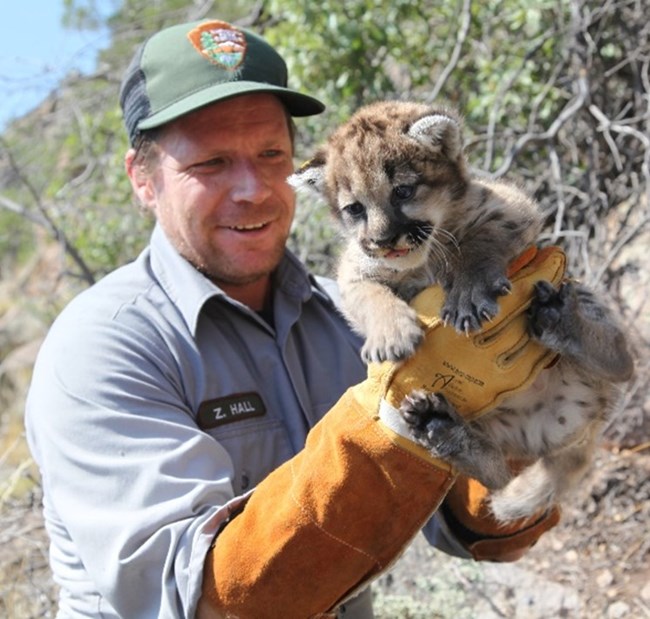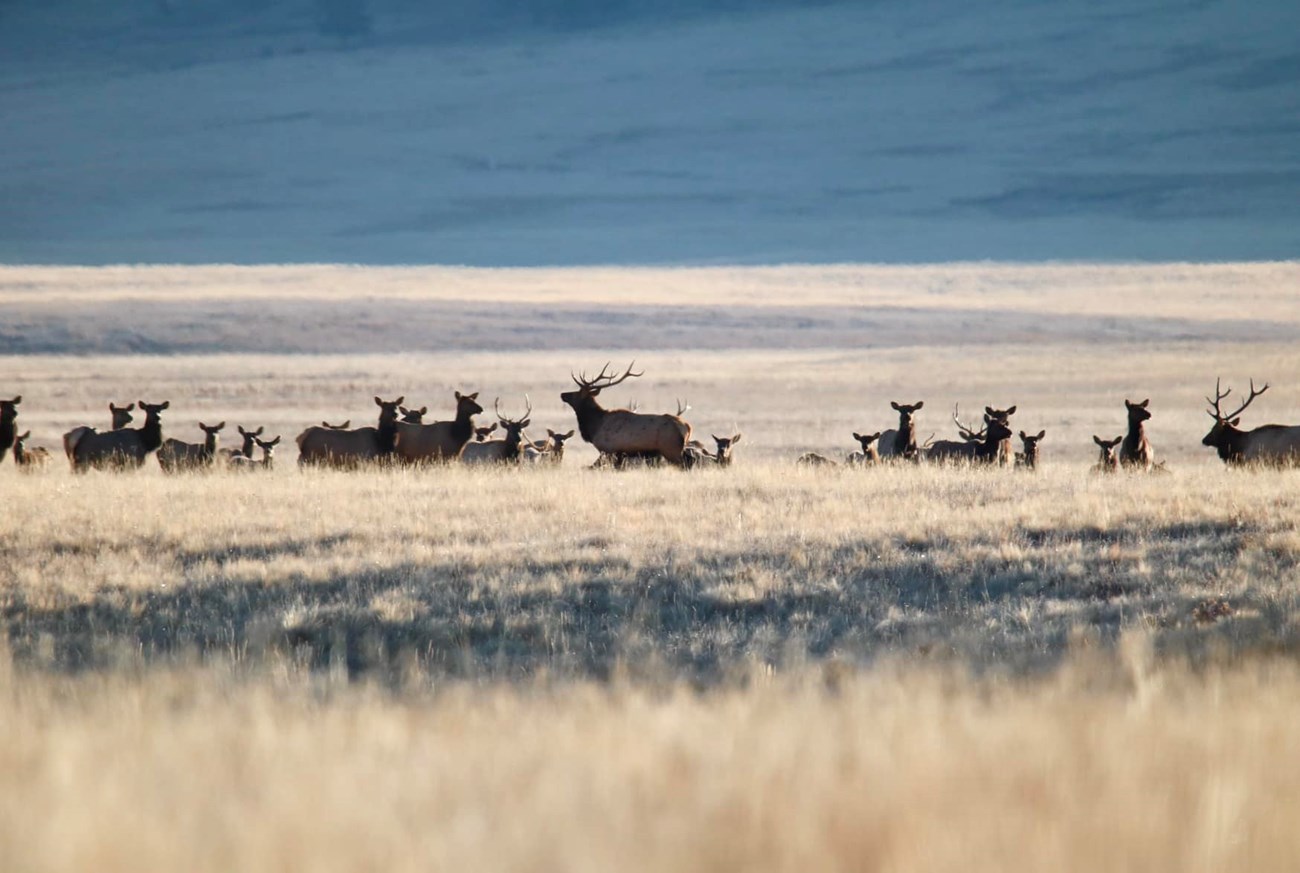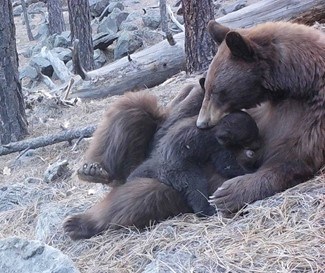Last updated: January 12, 2023
Article
Research Spotlight: Large Mammal Monitoring Project

NPS
Ecosystems are dynamic, with plants and animals responding to disturbances like wildfires and habitat loss. In the Jemez Mountains of northern New Mexico, researchers are monitoring the behaviors of four large mammal species - mountain lions, black bears, elk, and mule deer - to determine how ecosystem changes can impact their habitat preferences.
Trained wildlife biologists capture these animals and fit them with radio collars that track their movements across the landscape, allowing for remote, long-term monitoring. Reseachers then cross-reference the animals' movements with maps of known disturbance areas, such as those affected by wildfire, prescribed burns, and forest thinning.
How these large mammals respond to ecosystem changes over time will help park managers implement restoration treatments that mitigate wildfire risk and enhance habitats.

NPS/G. Farrell
Wildlife Captures & Monitoring
Rocky Mountain Elk, Cervus canadensis nelsoni
Primarily grazers, elk have a diverse habitat range but are often found in open prairies or meadows near forest edges. In mountain regions, they generally stay in higher elevations during warmer months and migrate to lower elevations in the winter.
During this study, researchers captured and monitored 124 elk: 110 adults and 14 calves. Elk shifted from selecting grassland cover at dawn/dusk, to selecting for greater canopy and forest cover at midday, and then to areas with greater herbaceous biomass at night. Elk were expected to migrate off of Valles Caldera and into lower elevations during the winter; however, during mild winters, many elk remained at higher elevations year-round.
Mule Deer, Odocoileus hemionus
Mule deer are a common deer species of the western United States. They are well adapted to arid, rocky environments typical of many parts of the American west. As ruminants - animals with four-chambered stomachs that chew regurgitated cud - mule deer are selective in what they eat and browse on higher-quality, more nutritous plants. They are herbivores, feeding primarily on forbs (flowering, herbaceous plants), the leaves and twigs of woody plants, and on mast (berries, fruit).
During this study, researchers captured and monitored 34 mule deer. The mule deer largely selected for areas burned by prescribed fire and generally avoided wildfire-burned and thinned areas when they were < 5 years old. However, mule deer strongly selected for thinned areas ≥ 5 years old.
American Black Bear, Ursus americanus
Black bears are omnivores, so they will eat almost anything. They compete with other large mammals for food and resources, but their opportunistic eating habits allow them to be highly adaptible, feeding on whatever is available. In the Jemez Mountains, black bears are known to drive mountain lions away from kill sites. This behavior contributes significant carrion to the food web, which is an important resource supporting ecosystem biodiversity and structure.
During this study, researchers have captured and monitored 58 black bears in the Jemez Mountains. Black bears have used all disturbed sites to varying degrees, although 48% of bed sites were located in undisturbed habitat while only 11% and 2% of bed sites were located in thinned and prescribed burn sites, respectively.
Mountain Lion, Puma concolor
Mountain lions (also known as cougars or pumas) are the most widely distributed large carnivore in the western hemisphere. As a stalk and ambush apex predator, they are capable of predating on a wide range of animals. This interaction not only benefits the ecosystem through exerting a top-down pressure on abundant species such as elk, but it also provides a crucial food source to scavenging species and cycles valuable nutrients to the soil and plants.
Between 2013-2019, researchers captured 23 mountain lions (19 adults and 4 kittens) in the Jemez Mountains. The mountain lions generally selected for intermediate slopes and avoided north facing slopes. Researchers also documented five birth den sites, which provide additional shelter and protection to the mother and kittens for several weeks during a period of vulnerability. These sites are often selected for high levels of concealment and difficult access.

NPS
What's Next?
The next phase of the project is to analyze changes in habitat selection of these large mammals across a broad area of ecosystem disturbance. This analysis will help inform future decisions regarding forest management, wildfire mitigation, and habitat restoration at Valles Caldera National Preserve and beyond.
This research is in collaboration between the New Mexico Cooperative Fish and Wildlife Research Unit, Department of Natural Resources Management at Texas Tech University, National Park Service, U.S. Forest Service, Jemez Pueblo, and New Mexico Department of Game and Fish.
Tags
- bandelier national monument
- valles caldera national preserve
- mountain lion
- elk
- mule deer
- black bear
- large mammals
- jemez mountains
- new mexico
- valles caldera
- wildlife biology
- fire ecology
- wildlife behavior
- wildfire
- wildland fire
- prescribed fire
- forest restoration
- habitat restoration
- valles caldera national preserve
- research
- science
- monitoring
- jmrlc
- natural resources
- wildlife
- animals
